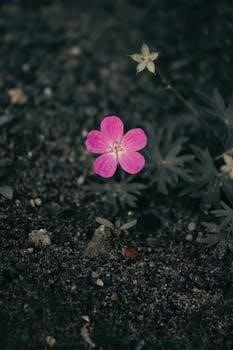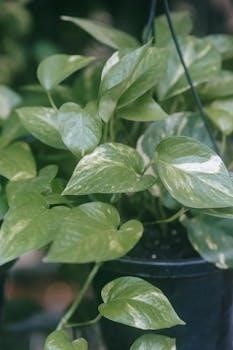Munsell Soil Color Chart⁚ An Overview
The Munsell Soil Color Chart, a vital tool in soil science, uses a standardized system for describing soil colors. Developed with the U.S. Soil Conservation Service, it is used by many professionals. The charts are also used in archeology and other fields.
The Munsell Soil Color Charts, often called the Munsell soil color book, serve as a fundamental resource for standardizing soil color description. These charts were originally developed in collaboration with the U.S. Soil Conservation Service, with the primary aim of classifying soil colors accurately. Geologists, civil engineers, and soil scientists rely on these charts as a consistent tool. Beyond soil analysis, the charts find applications in describing colors of rocks, archaeological specimens, and various other natural materials. The Munsell system provides a common language for color, crucial for comparing and contrasting observations across different locations and studies. Early versions of these charts were distributed for field trials, evolving into the current charts that encode color using three components⁚ hue, value, and chroma. The Munsell system is a vital tool for professionals needing precise color communication and analysis.
Development and Purpose of Munsell Charts
The Munsell color system, which underlies the Munsell Soil Color Charts, was conceived by Albert Munsell; The primary purpose of these charts was to create a standardized method for describing soil colors, ensuring consistency and accuracy in scientific research and practical applications. The system evolved from initial color measurements and field trials, leading to the robust charts used today. The development was driven by the need for a universally understood method of color classification. These charts facilitate effective communication about color and allow for the comparison of soil samples across different regions. The Munsell system’s three-dimensional approach uses hue, value, and chroma to define color precisely, making it superior to simple color names. The system’s structured approach has made it a critical tool for professionals in various disciplines, enhancing accuracy and clarity in color analysis.
Components of Munsell Color Notation⁚ Hue, Value, and Chroma
The Munsell color system uses three components to precisely define color⁚ hue, value, and chroma. Hue is the basic color, such as red, yellow, or blue. Value refers to the lightness or darkness of the color, ranging from black to white. Chroma indicates the intensity or purity of the color, which is its strength or weakness. These three components work together to create a three-dimensional color space that can be used to describe any color. The structured approach ensures that every color is given a unique numerical notation. The Munsell system was designed to be visually uniform, meaning that equal steps in notation represent equal steps in perceived color. This standardization allows for accurate and consistent color analysis. Understanding these components is essential for using Munsell charts effectively, making it a powerful tool for precise color communication and analysis in various fields.

Specific Munsell Soil Color Charts
Munsell charts include several tabbed soil color charts, such as 5R for Australia and Southeast Asia, 7.5R for tropical soils, and 10R, 2.5YR, 5YR, 7.5YR, and 10YR charts. These are used to classify soil colors.
Common Munsell Soil Color Charts (e.g., 5R, 7.5R, 10R, 2.5YR, 5YR, 7.5YR, 10YR)
The Munsell system employs a range of charts, each identified by a hue designation. Among the most frequently used are the 5R, 7.5R, and 10R charts, often employed for soils in specific geographic regions like Australia and Southeast Asia, as well as tropical and semi-tropical areas. The 2.5YR, 5YR, 7.5YR, and 10YR charts are also staples, each representing a progression along the red to yellow spectrum. These charts are crucial because they offer a standardized way to analyze and describe soil color, which directly correlates to the soil’s mineral composition, organic content, and other key properties. Each chart contains a series of color chips organized by value and chroma, allowing for precise color matching and documentation. Understanding these common charts is essential for professionals in soil science, geology, and related fields.
Applications of Munsell Charts in Different Fields
The Munsell color charts have a wide array of applications beyond soil science. In archaeology, they are crucial for describing the colors of artifacts, assisting in the analysis of materials, and documenting changes due to age or environmental factors. Civil engineers also rely on Munsell charts to assess soil properties for construction projects. Furthermore, they are utilized in environmental education programs, helping students understand the natural world and the impact of human activity. In material culture studies, the charts aid in analyzing and comparing various artifacts. Even carpet manufacturers use Munsell color to match carpet colors to local soils, which can help conceal dirt. The versatility of these charts makes them indispensable across many fields that require precise color analysis and communication.

Munsell Charts in Practice
Munsell charts are actively used in soil analysis, archaeology, and environmental education. These charts offer a standardized approach for color evaluation, which allows for reliable data collection and interpretation across various disciplines.
Using Munsell Charts in Soil Analysis
The Munsell Soil Color Chart is a cornerstone in soil analysis, providing a standardized and systematic approach to describing soil color. Soil scientists utilize these charts to visually assess soil samples, comparing them to the color chips within the Munsell book. This process allows for the determination of the soil’s hue, value, and chroma. These three components provide a unique identifier for each soil color, enabling accurate documentation and comparison across diverse geographical locations. The color analysis also provides clues to the composition of the soil, including the presence of organic matter, iron oxides, and other minerals. This information is crucial for soil classification, mapping, and evaluating its potential for agricultural use or environmental impact. Furthermore, the data collected through the Munsell charts contribute to scientific research and the development of sustainable land management practices. The charts are a practical and accessible method, making them an indispensable tool for both field and laboratory studies.
Munsell Charts in Archaeology and Material Culture
Beyond soil science, Munsell color charts play a significant role in archaeology and the study of material culture. Archaeologists utilize these charts to describe and classify the colors of artifacts, pottery shards, and other excavated materials. The standardized notation ensures consistency in documentation and facilitates comparison of findings across different sites. The color of artifacts can reveal information about the materials used, manufacturing techniques, and even the cultural practices of past societies. For example, the color of pottery can indicate the type of clay used and the firing conditions. The charts are also valuable for analyzing the weathering and alteration of materials over time. This helps in understanding the history and context of artifacts. The Munsell system is an objective method that avoids subjective color descriptions, allowing for clear communication and the preservation of vital data about material culture. It is a crucial tool in the meticulous documentation of archaeological finds.
Munsell Charts in Environmental Education
Munsell color charts serve as a valuable resource in environmental education programs, engaging students in the study of soil composition and its role in ecosystems. By using the charts, students learn to visually connect soil colors with natural environments, enhancing their understanding of soil properties and their significance. The charts also promote hands-on learning and outdoor activities, fostering an appreciation for nature and environmental awareness. Students explore how human activities impact the natural world through soil analysis and color identification, making environmental concepts more tangible and relatable. The systematic approach of the Munsell system helps students develop observational and analytical skills. This tool empowers future environmental stewards to understand and address environmental challenges using scientific methods. This promotes a deeper understanding of the complex interactions within natural systems and the importance of soil conservation.

Accessing Munsell Soil Color Chart Resources
Munsell color chart resources are available online, including free downloadable PDFs. Official Munsell color standards and resources can also be accessed to ensure accurate color matching and communication.

Munsell Soil Color Chart PDF Downloads and Availability
The Munsell soil color chart is a widely used tool, and thankfully, resources are readily available, including downloadable PDF versions. These digital versions offer convenient access for researchers, educators, and professionals working in various fields like soil science, archaeology, and environmental studies. Many websites provide free access to these PDF charts, allowing users to view, download, and print them for practical use. Availability of these resources ensures that a standardized method for describing soil color is accessible to anyone. It is important to note that while these downloadable charts are useful, professionals often rely on physical Munsell books or official resources for the most precise color matching. Always ensure you are using a version of the PDF that is accurate and true to the official Munsell specifications; With readily available PDF downloads, the Munsell soil color chart is more accessible than ever before.
Official Munsell Color Resources and Standards
For the most accurate color assessment, relying on official Munsell Color resources and standards is essential. The Munsell Color Science Laboratory is a key entity, providing research and education on color science. Munsell Color, as an organization, offers various color matching systems and products, ensuring that professionals have the right tools for their work. These official resources often include the physical Munsell soil color books, which are considered the gold standard for precise color matching. Additionally, you can find detailed information on Munsell’s official website, where they provide details about their color systems and standards. It is critical to use these official resources to ensure that the Munsell soil color chart is used correctly, maintaining consistency and accuracy in soil color classification and communication. By using official resources, professionals can maintain the integrity of the Munsell system.